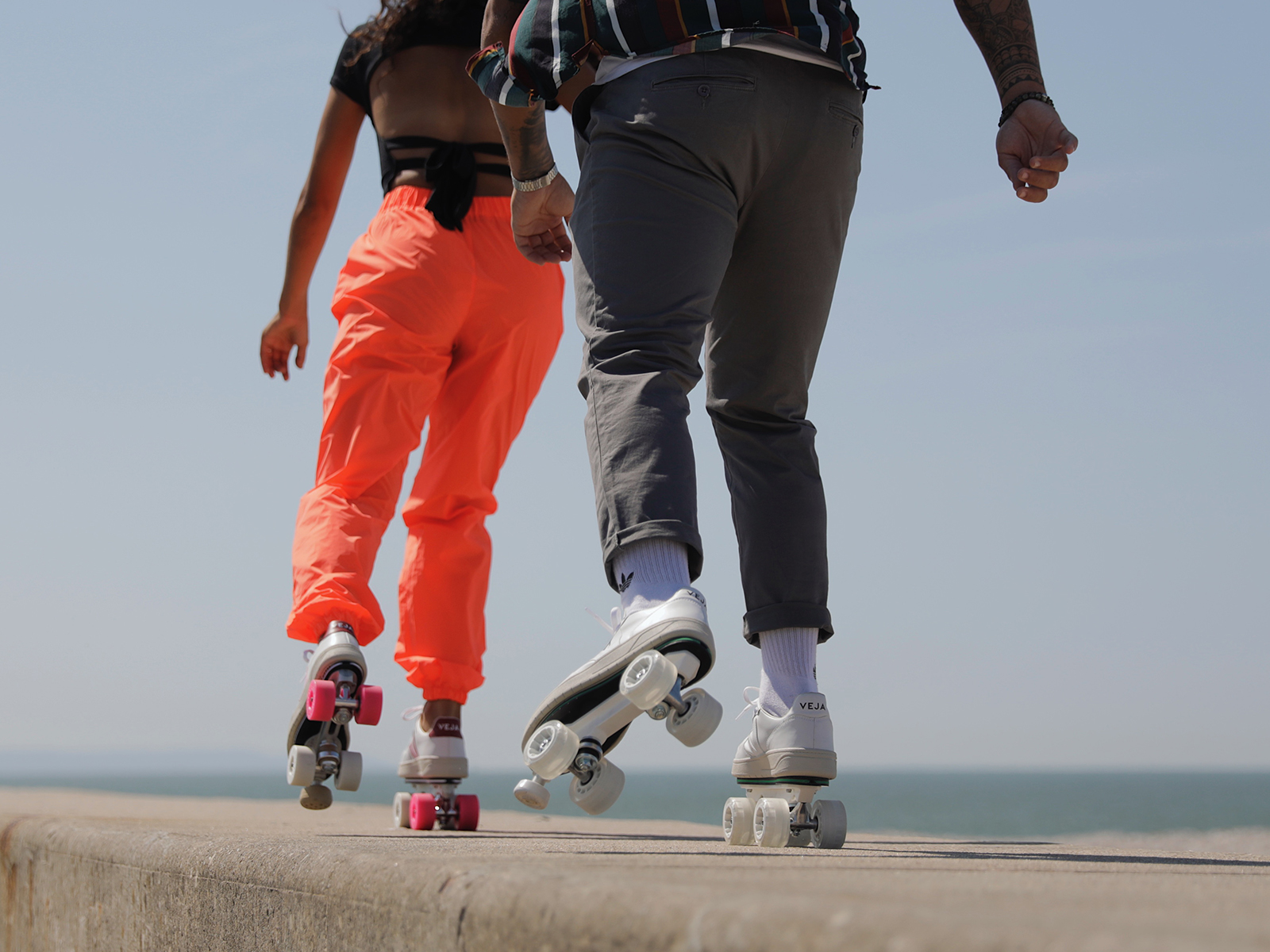Free shipping from $217 worldwide
-10% discount on Slades by joining the newsletter
Subscribe to our newsletter for exclusive access to the monthly drops
Blog - How to brake on roller skates?

How to brake on roller skates?
Feb 1, 2022
You're a rollerskater. Knowing how to brake with roller skates is essential to gain in freedom and pleasure. We will explore your learning basics. Whether you are a novice or experienced skater, we have gathered the most helpful practices to progress.
To enrich your experience and understanding, we integrate tutorial videos to improve pedagogy. Each brake is filmed from three points of view. The skate pleasure is within your reach.
Roller skate history is full of twists, through the ages and according to the sport practiced or trends. Braking types evolve, as much as their names. Let's share together our experience as skaters, influenced by our points of view and our knowledge. These techniques can be performed both in quad skates and inline, except for braking on the toe stops, specific accessories of quad skate.
/LATERAL BRAKE
Here, you roll at a slow pace. When you skate in a straight line, return to the parallel foot position. Then, place one foot in opposition to your trajectory, then the second. Transfer your body weight to the side where you want to turn. At the end of this movement, you are back in the parallel position.
/PLOW STOP
This method is also called “the lemon” in the acrobatic and roller skating world. The movement is similar to snow plowing on skis. Put pressure on the outer quarters of your skates to make you lose speed.
/T-STOP
Put a skate perpendicular to your direction. Your perpendicular skate front wheels come into contact with the ground and participate in braking. The other skate stays in line for smooth braking. Your bent knees help you to be flexible.
/TIGHT TURNS SUCCESSION
This braking will be very useful downhill and can be compared to parallel turns on skis. With your ankles in tension, place your body weight on each turn inside. The foot you place in front of you in your turn indicates the direction you are going to take.
/TOE STOP BRAKE
This braking is mainly practiced in technical and fast sports such as derby and rink hockey. There are two variations of this method for brake in skate.
/With one toe stop
During a fast forward skating, turn around and roll backwards. The supporting foot remains in its original position. The second foot is placed backwards, on the toe stop, which rubs on the floor.
/With both toe stops
The basic movement is the same. Turn around and while skating backwards, simultaneously position your two toe stops on the floor.
Don’t use the toe stop when skating forward. This is not appropriate and can damage your equipment.
/TURN STOP
This technique can be used to avoid an obstacle or stop quickly. You skate at an average speed. This brake consists of making a sharp turn, almost a half turn. The body is tilted on the turn inside and then straightens up as you exit the turn. It’s done naturally by placing the equivalent foot forward in the direction of your trajectory: the right foot forward for a right turn, and vice versa.
/POWER SLIDE
This technique is particularly suited to skaters who already have a good level, and who are confident for backward skate. Backward, you keep your supporting foot in line with the trajectory, and the other foot passes in a perpendicular position, well behind the body. Your weight is carried forward so you don't lose your balance. This brake system is very effective.
/PARALLEL
It's also called shuffle or cess-slide. It is probably the most advanced and effective technique, but its principle is simple. At full speed, the idea is to skid with both feet parallel to each other. To do this, the skater makes a turn and takes the curve with the body tilted inward. Thus, a slide of several meters takes place without loss of wheels adhesion. This specific movement is since 2018 an official discipline of freestyle inline skating.
We would be curious to hear about your experience and your favourite techniques. The comment space is open to you.
#Flaneurz
FREE SHIPPING
Free shipping worldwide
for all orders starting at €200
SECURE PAYMENT
Mastercard, Visa, Amex, Paypal
(Pay in 4 installments, free of charge)
TWO YEAR WARRANTY
Any problem with one of our products?
Contact us, they’re under a two year warranty.